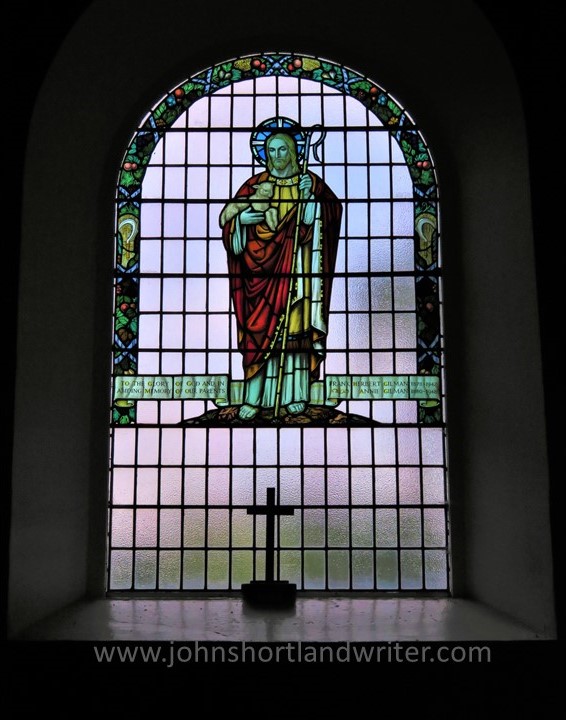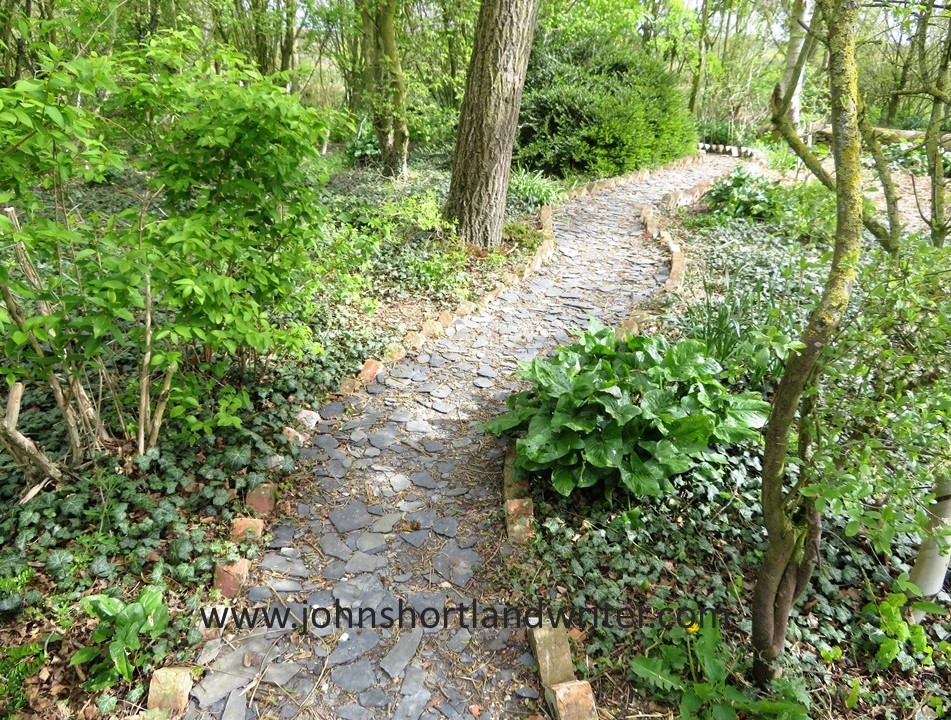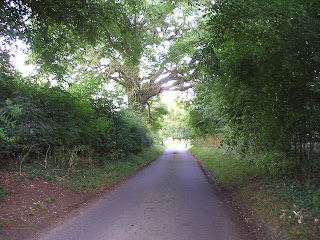In The Footsteps of Clare
The days have been unseasonably dry and the nights exceptionally cold for April but day after day of unbroken sunshine has meant that it has been particularly good to be outdoors. The warmth tempered by a gentle north-easterly has created perfect walking conditions. However, as is so often the way, the day I chose to wander along the byways that criss-cross the border of Lincolnshire, one of England’s largest counties, and Rutland, England’s smallest, there was more cloud to be seen than for weeks.

My walk began at the ford by the tiny hamlet of Aunby, a few miles north of Stamford. Stamford has been described as “the most perfect stone town in England” as well as being voted the best place to live. It certainly is a beautiful place to explore with numerous, fine churches as well as a great Friday market and a wealth of independent shops. Whereas Stamford has prospered through the centuries, Aunby suffered a dramatic decline: in the fourteenth century there were numerous houses and a church; today, apart from a few cottages, they only show as cropmarks.


Heading north-west along a grassy bridleway, the path climbs gently until a narrow lane with wide, grassy verges is reached. One of the many roadside nature reserves in the county, the late spring meant that the only wildflowers to be seen were cowslips which grew in plentiful splendour. Following this lane uphill to the elaborate, black and gold entrance gates of Holywell Hall where I turned left, glimpses of the mansion could be seen through the hedgerow that lined the lane. Both the house and grounds are immaculately cared for although I admired most of all the winding path cut through a splendid swathe of dandelions in full bloom. Considered by many a nuisance ‘weed’ to be sprayed out rather than a wildflower to be kept, dandelions are a great source of early nectar for bees and other insects as well as looking beautiful in their own right.



Crossing the county border into Rutland my route immediately turned left onto a forest track to take me up to Holywell Wood and into Pickworth Great Wood. It was here that I met a local couple exercising their black Labrador dogs, the only people I saw on the whole of my eight-mile walk. They told me that the area was one of the largest woodlands locally as well as being a Site of Special Scientific Interest, designated for its geology as well as its wildlife – a fact confirmed by the NatureSpot website (click here for more information). The woodland path was lined with primroses, the trees just breaking bud and coming into leaf but, sadly, I was too early to hear the nightingales sing.


Beyond the wood, the path crossed diagonally over unseasonably dry arable land to the village of Pickworth. It was at this point that I really felt that I was walking in Clare’s footsteps although we can safely assume that he knew most, if not all, of the paths that I would be taking that day. John Clare, the Peasant Poet, born into poverty and distraught by the destructive changes to the countryside and its people at that time, died in 1864 in the Northampton General Lunatic Asylum. It was at Pickworth where he laboured in the lime kiln which inspired him to write the poem The Ruins of Pickworth (click link here to read). The lime kiln still stands although it is barely visible through a thicket of blackthorn.


Pickworth, like Aunby, is another village that has almost disappeared. Thriving in the 1300s, it now has a population of less than a hundred. The only sign of the old village is the crumbling stone arch of the church and various grassy mounds and ruts in the surrounding fields. The arch stands on private property but with the help of the camera, details of ornate mouldings and leaves could be seen. It is thought that the Battle of Losecote Field in 1470 fought two miles from the village may have been the cause of its depopulation.


Although the association of Pickworth with Clare is important, to visit the Church of All Saints was the main purpose for my walk. Built in 1822 at the bequest of Joseph Armitage of Wakefield, Yorkshire, it is a rectangular, stone building of plain beauty and fine proportion. Set high on a bank and surrounded by trees, the interior is simply lime-washed, the only colour a small amount of stained glass above the altar.



From Pickworth, an old drove road, The Drift, leads back towards Aunby by crossing Ryall Heath. The road, now another old track, offers pleasing views across arable land, hedgerows filled with wildflowers and the sound of skylarks showering you from high with their song. The Drift ends at the junction with the road that takes you directly back to the start of the walk (turn left here). Although the B4116 can be quite a busy road at times there are wide grass verges to make walking feel safe. Finally, you reach the ford at Aunby, where this walk began. Alternatively, a few yards before the ford you can take the lane that leads to Clematis Cottage, where I stayed for the duration of this oh-so-welcome-after-lockdown short break.


Clematis Cottages at Lodge Farm, Aunby is a small group of buildings converted into delightful, self-catering holiday accommodation. Richard and Kaye Griffin, friends as well as the owners, live in the farmhouse where they provide every comfort to make a stay enjoyable. Set in extensive gardens, their aim is to be self-sufficient in vegetables, eggs and honey. Throughout the gardens there are paths and seating areas – one of my favourites is the summerhouse overlooking the small lake, a haven for wildlife. Although set on its own and surrounded by fields, Stamford is only six miles away and the internationally renowned Rutland Water, where you can watch rare ospreys nest and fish, ten miles away. It’s also the perfect base for the nearby Burghley Horse Trials. To find out more about staying in one of the cottages and their range of home-produced chutneys, preserves and honey click this link here.



Notes: the walk is a relatively easy and gentle route mostly along roads and tracks. In places the paths can be uneven and/or muddy but neither should deter anyone with average health and mobility. Although there are some inclines none are prolonged or steep. However, as always, care should be taken and appropriate clothing and footwear worn. It is approximately eight miles in length so allow a good three hours to complete.

Comments
Post a Comment